How DALI Lighting Systems Are Transforming Commercial Spaces in Australia
Share
As the demand for smarter, more energy-efficient buildings rises across Australia, one technology stands out for its adaptability and long-term value — the Digital Addressable Lighting Interface (DALI). Used in commercial and institutional environments, DALI offers unprecedented control over lighting systems, delivering efficiency, flexibility, and compliance in one streamlined solution.
Whether you're managing a shopping centre in Melbourne or retrofitting an office tower in Sydney, DALI is transforming the way Australian spaces are lit.
What Is DALI and Why Does It Matter?
DALI (IEC 62386) is a standardized protocol that allows lighting components — such as ballasts, drivers, and controllers — to communicate with each other digitally. Each lighting fixture can be individually addressed, grouped, dimmed, or monitored via a central system.
This is a step beyond traditional analogue control, offering:
-
Greater scalability
-
Reliable bi-directional communication
-
Seamless integration into smart building systems
Benefits of DALI in Australian Commercial Environments
1. Unmatched Energy Efficiency
Energy management is a top priority in Australia, where building codes and sustainability ratings are becoming more stringent. DALI supports:
-
Daylight harvesting to reduce artificial lighting when sunlight is available
-
Motion-activated zones for low-traffic areas
-
Scheduled operation to cut power use outside business hours
These features can contribute to higher NABERS and Green Star ratings, enhancing a property's environmental profile.
2. Precision Lighting Control
DALI allows building managers to:
-
Control individual fixtures or entire zones
-
Create lighting “scenes” for different times of day or activities
-
Adjust brightness and colour temperature to match user needs
This level of control creates a comfortable, well-lit environment that adapts to occupancy and usage patterns.
3. Simplified Maintenance
DALI-equipped systems can self-report faults, allowing maintenance teams to quickly identify and resolve issues. This predictive maintenance approach:
-
Reduces downtime
-
Cuts manual inspection labour
-
Ensures compliance with emergency lighting test requirements
Where DALI Systems Excel in Australia
1. Offices and Workplaces
DALI is ideal for open-plan workspaces where lighting needs to be personalized or adjusted during different shifts. It also supports hybrid working models by allowing zoned lighting to align with occupancy.
2. Shopping Centres and Retail Chains
Retailers can benefit from:
-
Scene-based lighting for visual merchandising
-
Accent lighting to guide shoppers or draw attention to displays
-
Smooth integration with HVAC for energy-efficient climate and lighting management
3. Educational Institutions
From libraries to classrooms and lecture halls:
-
Automated dimming enhances focus during presentations
-
Daylight-responsive lighting creates healthier environments
-
System-wide visibility helps facility managers reduce costs
4. Hospitals and Aged Care
In healthcare settings, lighting needs to be both functional and comforting:
-
Tunable white light replicates natural circadian rhythms
-
Motion sensors support patient safety during night-time movements
-
Emergency lighting testing ensures readiness during critical situations
How DALI Compares to Other Systems
|
Feature |
DALI |
0-10V |
KNX |
|
Individual fixture control |
✔ |
X |
✔ |
|
Bi-directional communication |
✔ |
X |
✔ |
|
Interoperability |
✔ (especially DALI-2) |
X |
✔ |
|
Requires dedicated cabling |
Yes |
Yes |
Yes |
|
Works with LEDs |
✔ |
✔ |
✔ |
DALI’s combination of standardization, precision, and scalability makes it the go-to choice for lighting-specific applications in large-scale settings.
What’s New: DALI-2 vs Original DALI
The new DALI-2 standard brings further improvements:
-
Increased compatibility between multi-brand devices
-
Inclusion of switches, sensors, and controllers in the standard
-
Support for tunable white and RGB control
-
Enhanced error reporting and commissioning tools
This has made DALI-2 the preferred protocol for recent commercial projects across Australia.
Wireless DALI: The Future of Flexible Lighting
For retrofits or heritage buildings where rewiring is complex, wireless DALI options (e.g. DALI+ over Bluetooth Mesh) are becoming more attractive. They provide:
-
Reduced installation time and cost
-
Seamless integration with modern smart control apps
-
The same benefits of wired DALI, now more accessible
Compliance and Green Building Certifications
DALI helps commercial buildings meet strict Australian standards, such as:
-
AS/NZS 1680 (Interior and workplace lighting)
-
Building Code of Australia (BCA) lighting energy efficiency requirements
-
Section J compliance for commercial buildings
It also contributes to certifications like:
-
NABERS (for energy and sustainability performance)
-
Green Star (certified by the Green Building Council of Australia)
These credentials are increasingly essential for developers, investors, and tenants.
Getting Started: Tips for Installing a DALI System
If you're planning a DALI installation in your facility:
-
Conduct a lighting audit to determine current performance and needs
-
Choose DALI-2 compliant devices for future-proofing
-
Hire a licensed DALI integrator to ensure compliance and optimal configuration
-
Use modular planning — start with critical areas and expand in phases
DALI lighting systems are no longer niche. They're mainstream, high-performance solutions that meet the demands of energy-conscious, technology-forward Australian businesses.
As Australia continues to lead in sustainable construction and smart building innovation, DALI systems offer the perfect synergy of efficiency, comfort, and control.

